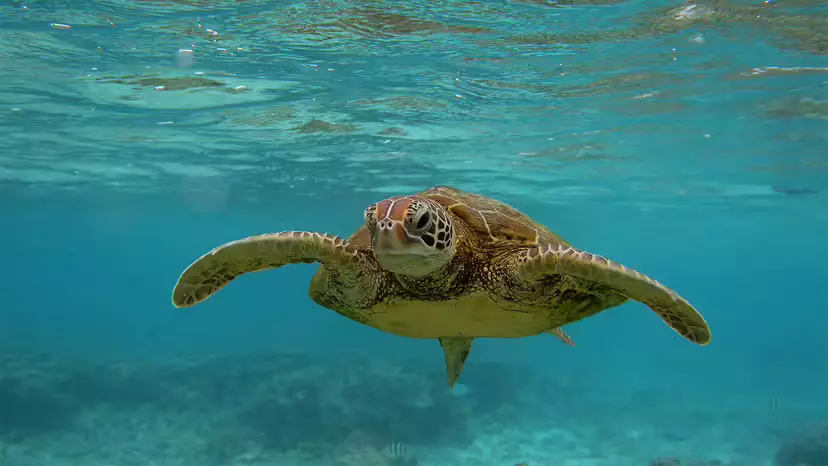In one line: Since the U.S. Endangered Species Act (ESA) took effect in 1973, most protected marine mammals and sea turtles have grown substantially—with sea turtle populations up by an estimated ~980% overall in analyzed groups, and Hawaiian humpback whales rising from ~800 (1979) to 10,000+ (2005) before delisting in 2016.

Listing with teeth: Species can be designated Endangered (at risk of extinction across a significant part of range) or Threatened (likely to become endangered soon).
“No take” + habitat safeguards: Listed species can’t be harmed, harassed, killed, collected, or traded; critical habitat can’t be destroyed or altered in ways that impair breeding, feeding, sheltering, or other vital functions.
Working mechanisms:
Critical Habitat designations and Recovery Plans;
Section 7 consultations to ensure federal actions don’t jeopardize listed species;
Section 10 permits/Habitat Conservation Plans to minimize impacts and ensure net benefits.
Scope: 31 ESA-listed populations of marine mammals and sea turtles.
Trend: 78% of marine mammal populations and 75% of sea turtle populations increased after ESA protections began; only 9% of marine mammal populations declined, and no sea turtle population declined post-listing in the sample.
Stand-out rebounds:
Sea turtles overall: roughly +980% vs. pre-listing baselines.
Hawaiian humpback whales: ~800 (1979) → 10,000+ (2005); delisted in 2016.
Nesting beach protection
Night lighting rules, patrols, and seasonal closures reduce disorientation and disturbance.
Critical habitat keeps development and equipment off key nesting areas and corridors.
Smarter fisheries
TEDs (Turtle Excluder Devices) in shrimp trawls; seasonal/area closures for longlines and gillnets; observer programs and bycatch limits.
Safer seas
Vessel speed limits and approach distances reduce ship strikes and harassment (benefiting whales, dolphins—and turtles).
Enforcement, monitoring, public action
Long-term nest counts, tagging, and strandings response; rehabilitation centers; robust federal–state–NGO collaboration and community volunteers.
Green turtles: Sustained growth in female crawls and nest counts on protected beaches; lighting management and TEDs are key drivers.
Hawksbills: Gradual recovery from severe historical shell trade; sensitive to coral reef health.
Loggerheads: Bycatch once a major mortality source; gear improvements and time–area closures significantly reduce incidental take.
Leatherbacks: Highly migratory; progress is patchy—open-ocean bycatch and marine debris remain tough challenges.
Hawaiian humpbacks (whales): Anti-whaling era + ESA/Marine Mammal Protection Act + shipping rules produced a flagship comeback.
Ongoing declines: Hawaiian monk seals and Southern Resident killer whales continue to struggle (prey scarcity, contaminants, noise, entanglement, and cumulative stressors).
Headwinds for turtles: Warming beaches (skewed sex ratios), erosion/sea-level rise, plastics and chemicals, boat strikes, and uneven international enforcement.
On the beach:
Keep lights off at night; give nesting females and hatchlings space; don’t touch or reroute hatchlings; pack out trash and fishing line.
On the water:
Slow down; respect legal viewing distances; avoid crowding or chasing wildlife.
Eating & shopping:
Say no to tortoiseshell (hawksbill) products and unverified “sea turtle” trinkets; choose certified sustainable seafood.
Civic action:
Support local turtle patrols/rehab centers; report strandings to authorities; back evidence-based fishery rules and coastal habitat protections.
“Threatened” vs. “Endangered”: threatened = likely to become endangered soon; endangered = at serious risk of extinction.
What counts as “harm”? Not just killing—habitat changes that prevent feeding, breeding, or sheltering also qualify.
Why long timelines? Sea turtles are late-maturing, long-lived; it often takes a decade or more for nest numbers to reflect policy changes.
If populations are up, can we relax protections?
Not safely. Turtles fit the slow-life-history profile: recovery depends on steady, long-term protections; backsliding can erase gains quickly.
Do TEDs actually work?
Yes—when installed and enforced, TEDs dramatically cut trawl bycatch. Coupled with time–area closures, they balance conservation and fishing access.
Is the “~980% increase” real?
It’s an aggregate, post-listing improvement relative to baselines across analyzed turtle populations. Recovery varies by species and region, but the overall trend is strongly positive.
What should I do if I see nesting or hatchlings?
Keep distance, avoid flash/white light, don’t handle animals, and notify local patrols if something looks wrong.
animal tags: sea turtles
We created this article in conjunction with AI technology, then made sure it was fact-checked and edited by a Animals Top editor.